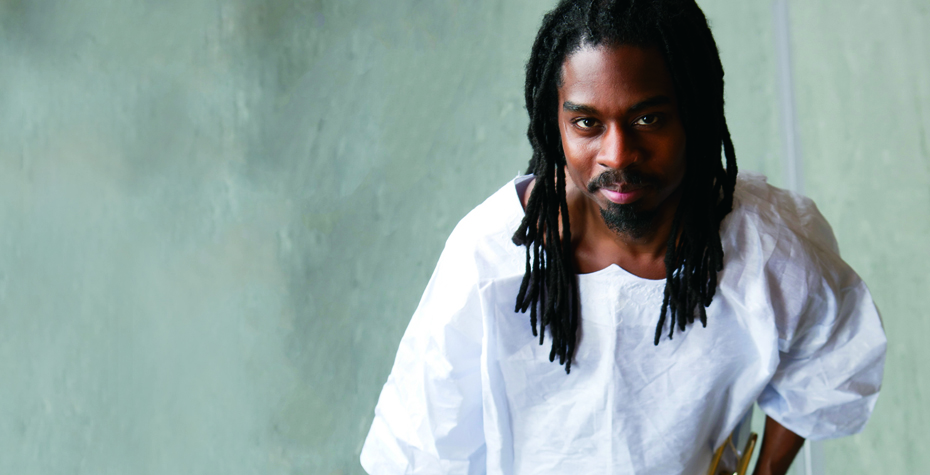Bevil Conway spoke with BBC Radio 4 about the role of neuroscience in art appreciation

Associate Professor of Neuroscience Bevil Conway discussed his research and artwork with BBC Radio 4 on January 22, in a feature exploring the role of neuroscience in art appreciation.
The feature, titled "Beauty and the Brain," focused on the subject of "neuroesthetics," a relatively new field that explores the neural basis of visual art. The show’s host, cultural commentator and sociologist Dr. Tiffany Jenkins, interviewed experts from around the world on what happens in the brain when we like or dislike art, and on how neuroscience is not only influencing areas of art appreciation, but is even being used in art creation. Professor Conway spoke with Dr. Jenkins on how he uses his research in visual neuroscience to enhance his artwork.
"Neuroscience has been very useful in helping me figure out what kinds of effects may work towards a particular goal," said Conway. "I think there’s a deeper way in which neuroscience plays out in my work, and that is this notion of abstraction. We know right at the outset in the retina that visual information is coded as spots of light and dark. Then at some subsequent stage, we have the development of contours, and then at some later stage you have a representation of highly complex objects, like faces. And that all has provided a fun playground within which to work in the studio."
Conway then discussed whether knowing about how the brain works would benefit the average art viewer.
"I think if you look at a work of art with this neuroscientific information it can provide people with a handle to start to think about what the elements are in the picture, much like a formal analysis in art history might do. And oftentimes by providing a different kind of language--that is through neuroscience--you can have a different lens on art practice."
Associate Professor of Neuroscience Bevil Conway is a visual neuroscientist and visual artist at Wellesley College. He teaches an advanced interdisciplinary course titled Vision and Art: Physics, Physiology, Perception, and Practice, which features participation from the Art Department. His scientific interests lie in the exploration of the neural basis of color, and his research program aims to understand the neural processes by which color influences emotional state. Conway has also explored how certain visual impairments can benefit artists: his finding that Rembrandt may have developed such a condition as a child was reported on by the Boston Globe and the New York Times in 2004. Professor Conway’s own works of art are exhibited at the Fogg Art Museum and in private collections across the globe.
- by Susan Puente ‘14
